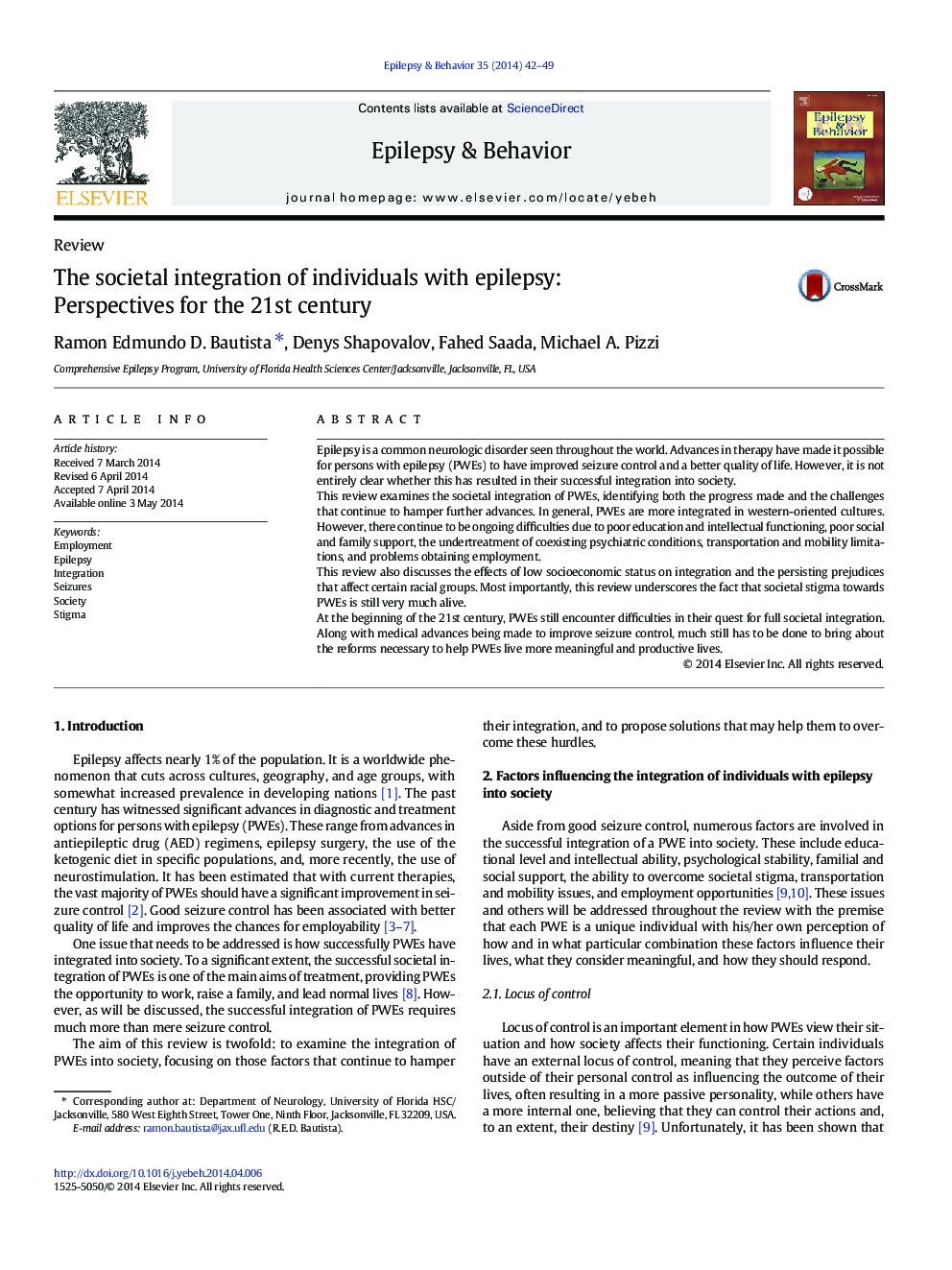| Article ID | Journal | Published Year | Pages | File Type |
|---|---|---|---|---|
| 3049627 | Epilepsy & Behavior | 2014 | 8 Pages |
•Despite treatment advances, it is not clear how well PWEs are integrated into society.•Social integration encompasses multiple factors such as employment and family life.•This review examines the current state of social integration of PWEs.•Ongoing stigma remains the biggest hurdle to the social integration of PWEs.
Epilepsy is a common neurologic disorder seen throughout the world. Advances in therapy have made it possible for persons with epilepsy (PWEs) to have improved seizure control and a better quality of life. However, it is not entirely clear whether this has resulted in their successful integration into society.This review examines the societal integration of PWEs, identifying both the progress made and the challenges that continue to hamper further advances. In general, PWEs are more integrated in western-oriented cultures. However, there continue to be ongoing difficulties due to poor education and intellectual functioning, poor social and family support, the undertreatment of coexisting psychiatric conditions, transportation and mobility limitations, and problems obtaining employment.This review also discusses the effects of low socioeconomic status on integration and the persisting prejudices that affect certain racial groups. Most importantly, this review underscores the fact that societal stigma towards PWEs is still very much alive.At the beginning of the 21st century, PWEs still encounter difficulties in their quest for full societal integration. Along with medical advances being made to improve seizure control, much still has to be done to bring about the reforms necessary to help PWEs live more meaningful and productive lives.
